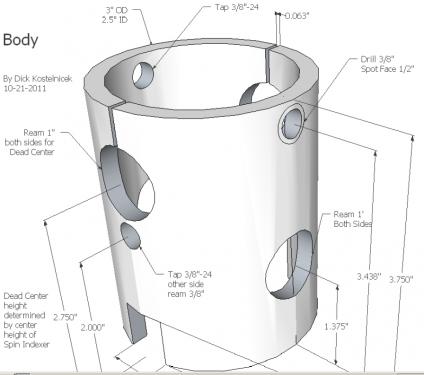Posts: 4,368
Threads: 178
Joined: Feb 2012
Location: Missouri, USA
I do this:
But I use a full diameter 1/2" center finder and leave the .200" tip for small diameters.
![[Image: 0203524-23.jpg]](http://www.use-enco.com/ProductImages/0203524-23.jpg)

Willie
Posts: 3,795
Threads: 183
Joined: Jun 2012
Location: Farmington Hills, Michigan
The following 2 users Like TomG's post:
PixMan (09-04-2013), EdK (09-05-2013)
Ed,
You can also use an dial test indicator to center a part. Just swing the indicator on each side of the part and adjust the table until it reads the same on each side. If you do it on a piece of tubing, set your quill stop so you can set the indicator to the same level in Z on both sides of the tube (preferably at the center).
Tom
Posts: 2,344
Threads: 53
Joined: Feb 2012
Location: Spencer MA USA
The following 1 user Likes PixMan's post:
EdK (09-05-2013)
I run the indicator up & down to find the high point of the radius and side-to-side to find the low point of the straight at centerline, then adjust the Y axis until the readings are equal.
Posts: 716
Threads: 32
Joined: Apr 2012
Location: Washington, USA
The following 1 user Likes Sunset Machine's post:
EdK (09-05-2013)
If the work is too large for an edge finder, lean a square against it and reference from that. In a similar fashion you can reference from a vice jaw. You can also kiss the top of the work with a small endmill and eyeball it, the middle of the narrow line it produces will be center.









![[Image: 0203524-23.jpg]](http://www.use-enco.com/ProductImages/0203524-23.jpg)

![[Image: TomsTechLogo-Profile.png]](http://tomstechniques.com/wp-content/uploads/2013/11/TomsTechLogo-Profile.png)